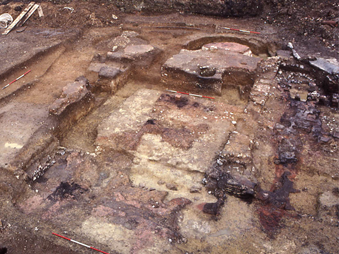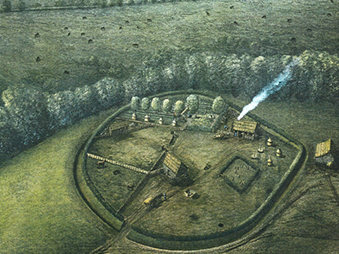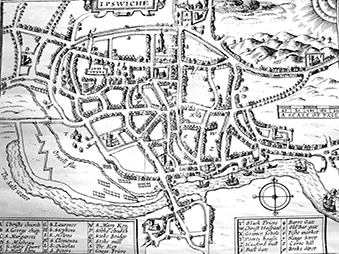The ‘later prehistoric’ period includes the Neolithic, Bronze Age and Iron Age periods, which covers from around 4,500 BC to the Roman Conquest in AD 43. In this part of England, the settlement sites of this period contain timber buildings which leave only ephemeral archaeological traces in the form of post-holes and gullies. As a result, these traces tend not to be recognised unless a site is being intentionally excavated by archaeologists. Pits and ditches associated with these settlements are more durable, but again are unlikely to be identified outside of archaeological excavations. Stone and metal artefacts, such as flint axes or bronze blade fragments, are both resilient and more recognisable, but are usually only recorded as ‘stray finds’, with no information about their archaeological contexts.
Neolithic and Iron Age burials are rare in Suffolk, and none have been uncovered in Ipswich. Bronze Age burials, however, are relatively numerous and more readily identifiable as they are frequently associated with substantial burial mounds and are often found as cremations in large pottery urns.
Distribution
Stray finds from this broad 'later prehistoric' period have a fairly even distribution over the borough, which suggests that settlement may have been present in most areas, although objects may also have been picked up from other areas and subsequently lost. There is a noticeable concentration of Neolithic stone and flint axes in Ipswich which suggests that some may have been imported from the surrounding rural areas.
The most notable ‘stray finds’ in Ipswich are the Iron Age gold torcs (IPS 079) that were found in the Belstead Hills area in 1968 (with an additional one in 1970). They are an important indicator that there must have been significant and very wealthy settlements in the near vicinity.
The sites with recorded archaeological features (houses, hearths, pits and ditches) are heavily biased towards those areas where housing and industry expanded in the 20th century – that is in the Whitehouse and Whitton areas on the north and northwest sides of Ipswich, in the Chantry area of the south-west, and in the Landseer, Gainsborough and Priory Heath districts of the south-east. These prehistoric deposits have been better preserved because they were only disturbed when excavated before any development since the 1970s - these areas did not have the long-term and extensive below-ground disturbances that the areas of central Ipswich experienced.
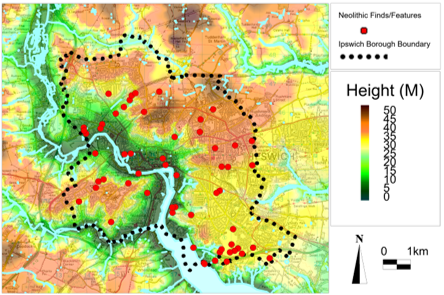
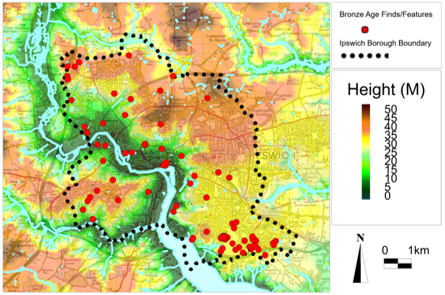
Image: All known Neolithic sites and findspots (left) and known Bronze Age sites (right) in the borough of Ipswich
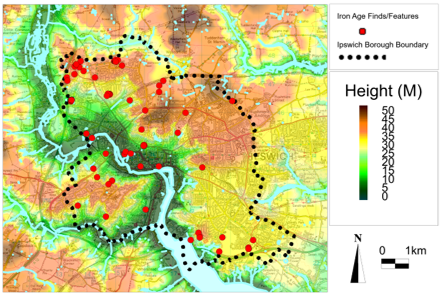
Image: All known Iron Age sites and findspots in the borough of Ipswich
Within the limitations of this biased sample, there is a tendency for the sites to be located on the edges of the slightly higher ground that forms an arc in the eastern half of the borough area, and in the similarly higher area in the Stoke area of the south-west. This is similar to locations of such settlements elsewhere in Suffolk. It is noteworthy that some of the Bronze Age burial sites (IPS 017, IPS 087, IPS 104, IPS 400) are in the lower areas of the western part of the borough, on or around the terraces of the River Gipping. In contrast, another group (IPS 024, IPS 031, IPS 676, IPS 725, IPS 1581) in the south-east of the borough are on higher ground and form an extension to a larger group that extends into Foxhall, Nacton, Bucklesham and Levington.
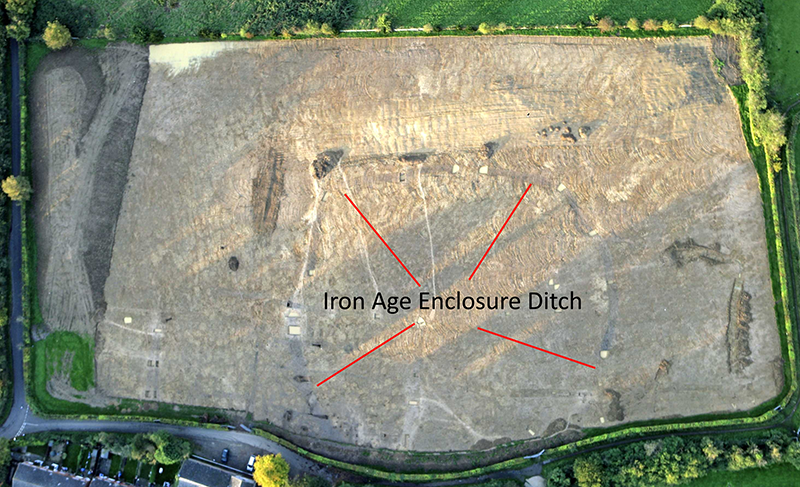
Image: Excavation of an Iron Age enclosure in Ipswich
